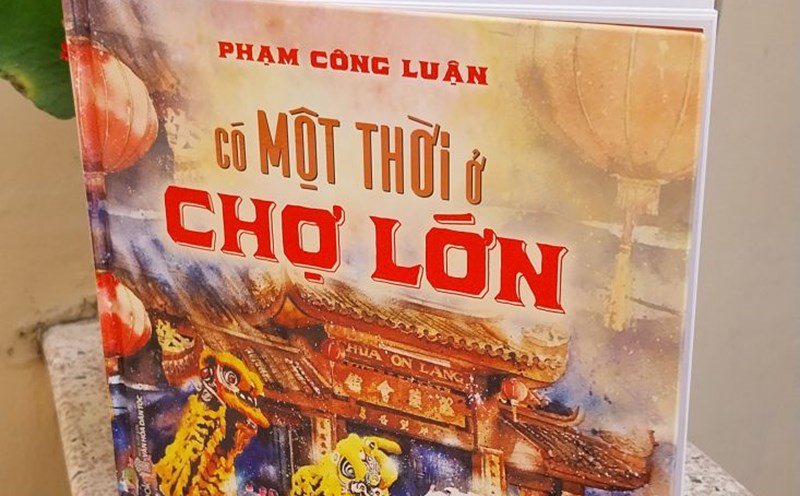sho pom held its main meeting on the last days of the month at 1, 4, 6, and 9. I chose one of them to go home. The road leading to the village was once flooded with the scent of pure grapefruit flowers, now overgrown with larger fruits, sometimes the scent of the the the in every shell.
When I arrived, Nom market was crowded with people passing by. The early morning sunlight covered the back of the canopy, leaning on the hats of women and mothers going to the market. The market here starts at around 5am and ends when the seller is out of stock.
I slowly walked on the red brick, following the children holding their mother's shirt deep into the market. In a moment, I felt like I was younger, clinging to his shirt every day when he went to the market. Unlike many places, Nom market is gathered right in front of the Tam Quan of Nom pagoda (Linh Thong Co Tu). The bustling scene of buying and selling blends with the ancient, quiet sound. Even though I don't hear the temple bells, I still feel the bell's sound very sweet in my soul.
The ancient Nom market, not only because of its history of being formed during the Le Dynasty and restored during the Nguyen Dynasty, has been seen by every corner of the market. The three rows of shops are low-lying, the walls are made of dark red bricks, without plaster, and the top is also covered with red tiles. After many bird breeding seasons, the market architecture has been almost kept intact, only covered with a layer of dark green moss. Raising his head, he saw red tiles and green walls, looking down, he saw fresh green vegetables and tomatoes red with redness. The old color blends with the vibrant existing color, making people feel uneasy.
Market vendors still use an old bag to display goods, sit on the floor or in chairs to sell. The restaurants are also very simple, with only a wooden table and a few long chairs enough space for customers to sit. Hungry and hungry, I stopped by a bun with a fragrant aroma in the middle of the market, sitting with both young and old people in the village. The noodle seller named Tam, seeing customers coming to offer, still hesitated to move the old bowls.
The noodle shop has existed at Nom market for more than 20 years, every day Ms. Tam is busy soaking in noodles, adding meat, and pouring water for customers. The restaurant's bun chab is very popular. The grilled pork rolls are cleverly grilled, the skin is slightly sliced, bitten, and you can immediately feel the rich, fragrant flavor. Having been selling vermicelli atom market for all these years, Ms. Tam is not only familiar with the job but also familiar with the atmosphere of every market.
After chatting with customers at Ms. Tam's shop, I learned that Nom market was once famous as a place to exchange raw materials for bronze smiths in the whole area. copper objects from all over the country once gathered in this market, as the saying goes: "The bridge is crushed, return to Cau Nom".
Today, Nom market has turned into a traditional market with a variety of products. The villagers have also changed their occupations, and copper casting products are gradually disappearing. Only the green, smooth stone pedestals that have been sat on too many lake traders in the market are traces of the magnificence and bustle of a time of trading.
I continued to walk through the stalls of gifts from the countryside, inhaling the sweet, fragrant smell of ripe jackfruit. Banh ruc, banh chung, banh fri... all the gifts that were once the dream of children every time their mothers came home from the market. That day, just hearing the sound of sandals squealing outside the gate, they shouted, clinging to their mother waiting to open the lane, waiting for a fried cake or rice burner. The simple market makes children happy all day. "I hope you will come back to the market" is also from that.
Leaving the cake gift shop, I stopped by the clothing area. Every corner of Nom market is marked by old ways of life. From the sweet soup, noodle shops or vegetable shops that are taken care of by women with powdered gray hair, hairpins and hats, to the rows of clothes selling a variety of patterned winged shirts, black socks flying in the wind. All exude a simple, traditional lifestyle that has been around for generations, like the rays of the harsh sunlight below the old red brick.
People going to Nom market or other rural markets are not only to buy and sell, but also to meet and chat. Although buying goods very quickly, it seems that everyone stays in a couple of hours, because everyone is familiar with the market. Sometimes it's the season, then the chickens and buffaloes in the house. Let's talk about it, each person contributes a word, that's why the market is bustling.
wandering to the end of the market, I saw two young people enthusiastically taking vivid photos of Nom market. They are travelers from Hanoi, bringing with them the excitement of settling down at this ancient market. The friend named Ngoc, with a bright smile, exclaimed: "Nom Market is very beautiful and peaceful!".
Nom Market has now become a destination that attracts visitors from all over to experience the rural market during their journey to visit the reserve of Nom village.
The sun rises,om market gradually becomes more crowded, and the noise of stories is less bustling. On the red brick floor, there are only sugarcane shells and jackfruit shells left, and under the golden sun, the aroma of the stream still sticks. I left the market and went deep into the village. To enter the village, you have to cross a 200-year-old green stone bridge across the Nguyet Duc River, then continue through the village gate with 3 words engraved: "Dong Cau Mon".
Passing through the ancient village gate is a village pond that appears before our eyes, like a giant mirror reflecting the daily life of many generations of people here. From the shadow of the young people from school with a bright red scarf flying on their shoulders, to the slow bicycles of the women and mothers who just left the market, all were imprinted on the clear, calm blue water.
"...I don't know if the country will keep days, keep months/ Keep memories in the flow...", the poem suddenly floated in my mind. For hundreds of years, the village pond water has still flowing to the East, quietly recording the stories and ups and downs of this land. Cho Nom, despite many "bride-to-be" moments, is still a place that preserves the soul of a traditional cultural feature in the village.
Leaving the market, leaving the village, I walked towards Provincial Road 385, and could hear the ship's whistle from afar. That fleet of ships, every day, bustles through Nom village, bringing the changes of the city. With the bustling pace of life of trains, Nom markets still take place, and all classes of people in the village regularly go to the market early in the morning. The old traces of the rural market are still there, deserted and enduring for hundreds of years.











